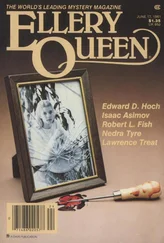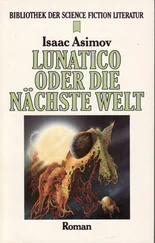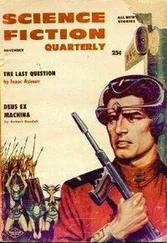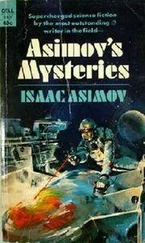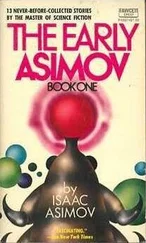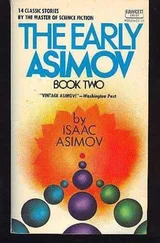Isaac Asimov - Asimov’s Guide To Shakespear. Volume 1
Здесь есть возможность читать онлайн «Isaac Asimov - Asimov’s Guide To Shakespear. Volume 1» весь текст электронной книги совершенно бесплатно (целиком полную версию без сокращений). В некоторых случаях можно слушать аудио, скачать через торрент в формате fb2 и присутствует краткое содержание. Жанр: Культурология, на английском языке. Описание произведения, (предисловие) а так же отзывы посетителей доступны на портале библиотеки ЛибКат.
- Название:Asimov’s Guide To Shakespear. Volume 1
- Автор:
- Жанр:
- Год:неизвестен
- ISBN:нет данных
- Рейтинг книги:4 / 5. Голосов: 1
-
Избранное:Добавить в избранное
- Отзывы:
-
Ваша оценка:
- 80
- 1
- 2
- 3
- 4
- 5
Asimov’s Guide To Shakespear. Volume 1: краткое содержание, описание и аннотация
Предлагаем к чтению аннотацию, описание, краткое содержание или предисловие (зависит от того, что написал сам автор книги «Asimov’s Guide To Shakespear. Volume 1»). Если вы не нашли необходимую информацию о книге — напишите в комментариях, мы постараемся отыскать её.
Asimov’s Guide To Shakespear. Volume 1 — читать онлайн бесплатно полную книгу (весь текст) целиком
Ниже представлен текст книги, разбитый по страницам. Система сохранения места последней прочитанной страницы, позволяет с удобством читать онлайн бесплатно книгу «Asimov’s Guide To Shakespear. Volume 1», без необходимости каждый раз заново искать на чём Вы остановились. Поставьте закладку, и сможете в любой момент перейти на страницу, на которой закончили чтение.
Интервал:
Закладка:
Although Tyre recovered to some extent, it remained only a shadow of its former self, first under the Ptolemies of Egypt, then under the Seleucid Empire, and finally under the Roman Empire.
It was in 198 b.c., just about the suggested time of the events of this play, that Antiochus the Great wrested the southern part of Syria from Egypt.
Tyre vanished from the view of western Europe after the breakup of the Roman Empire, but reappeared in the time of the Crusades. The Crusaders captured it in 1124 and for over a century it remained one of the chief cities of the Christian "Kingdom of Jerusalem." When the Crusaders were finally driven out of the East, Tyre was destroyed. A small village, still bearing the old name, exists on its site now, in southern Lebanon.
The original Greek version of the story of Pericles is lost, but a Latin prose romance based on that Greek version exists. It begins with the incest and riddle of Antiochus, and the young man who comes to win the princess is "Apollonius of Tyre." The "of Tyre" merely means he was born there, or lives there. To make him Prince of Tyre is an anachronism, for Tyre did not have independent rulers in Hellenistic times.
Shakespeare did not use the name Apollonius. He was influenced, apparently, by a character in Arcadia, a romance written in 1580 by Sir Philip Sidney, which had as one of its heroes a character named Pyrocles. Pyrocles' nobility was something like that which Shakespeare had in mind for his own hero, and, perhaps for that reason, he used the name, converting it to the more common Greek form of Pericles.
The only important historical Pericles was the leader of democratic Athens from 460 to 429 b.c. Under him, Athens was at the height of its power and culture and his rule may be taken as coinciding with the Golden Age of Greece. It must be emphasized, though, that the Pericles of Shakespeare's play has nothing whatever to do with Pericles of Golden Age Athens.
… this fair Hesperides
Pericles declares himself aware of the danger of wooing Antiochus' daughter, and she is brought out before him-a vision of loveliness. Antiochus says:
Before thee stands this fair Hesperides,
With golden fruit, but dangerous to be touched;
For deathlike dragons here affright thee hard.
—Act I, scene i, lines 28-30
This is a reference to the eleventh of the twelve labors which Hercules was supposed to undergo in the Greek myths. The Hesperides are so named from a Greek word meaning "west." They were the three daughters of Hesperus, the Evening Star (which always appears in the west after sunset), according to one version of the myth. Another version has them the daughters of the Titan Atlas, who gave his name to the Atlantic Ocean and who was associated with what was, to the Greeks, the Far West.
On the far western section of the north African coast there was supposed to be a garden containing a tree bearing golden apples (oranges, I wonder?), which was guarded by an ever watchful dragon. Hercules achieved this task, as he did all others, but Antiochus seems to doubt that Pericles can do the equivalent.
… to Tharsus
Antiochus presents the riddle Pericles must solve. It is a silly riddle and quite transparent. Pericles sees the answer at once and is horrified. He carefully hints at the truth and Antiochus is, in his turn, horrified.
Pericles sees that to have solved the riddle is as dangerous as to have missed it and leaves hurriedly for Tyre. Antiochus sends a servant after the young prince to poison him.
Even at Tyre, Pericles is uneasy. He is not far enough from Antioch and he feels that Antiochus will come against him with an army and bring misery on the whole city. (And well he might, for in actual history, Tyre became part of Antiochus' dominions in 198 b.c.)
Pericles tells his loyal lord, Helicanus, the story and says he intends to go into exile:
Tyre, I now look from thee then, and to
Tharsus Intend my travel…
—Act I, scene ii, lines 115-16
No city named Tharsus is to be found in the gazetteers.
The name is very similar to Tarsus, an important city on the southern coast of Asia Minor, best known to us as the place where Antony and Cleopatra first met (see page I-343) a century and a half after the time of Pericles, and where St. Paul was born a few decades later still.
Tarsus, however, is only about 170 miles west of Antioch and was as firmly in the Seleucid grip as was Tyre itself. It is interesting to wonder if perhaps Tharsus is a distortion of Thasos, a small island in the northern Aegean Sea. There are places in the play where Thasos would fit well.- However, it is most likely that Tharsus is a completely fictitious place, no more to be located on the map than the Bohemia of The Winter's Tale (see page I-156).
… the Trojan horse …
Pericles leaves Tyre just in time to escape Antiochus' poisoning emissary, but he finds matters in Tharsus not well. Its governor, Cleon, and his wife, Dionyza, bewail the fact that the prosperous city has been reduced by a two-year famine to a point of near cannibalism. Even as they are wailing, a fleet of ships appears on the horizon. At first they suspect it is an enemy come to take advantage of their weakness, but it is the noble Pericles. He enters with his attendants and says:
… these our ships you happily [i.e., perhaps] may think
Are like the Trojan horse [which] was stuffed within
With bloody veins expecting overthrow,
Are stored with corn to make your needy bread,
—Act I, scene iv, lines 91-94
The Trojan horse was the final stratagem of the Greeks, who after ten years' siege of Troy (see page I-89) had abandoned hope of conquest by direct attack. The climactic scene of the war is not described in Homer's Iliad or in Shakespeare's Troilus and Cressida. It is, however, described in Vergil's Aeneid.
The Greeks built a giant hollow horse, filled it with their best warriors, then pretended to abandon the siege and sail away. The Trojans were easily convinced that the horse was an offering to Minerva (Athena) and that it was a good luck token which, if accepted, would forever protect the city against conquest. It was accordingly taken into the city and that night the Greek warriors emerged and opened the gates to the remainder of the army (which had secretly returned). Then began the bloody task of sacking the city.
Pericles' ships, however, were not filled with warriors, but with food.
… our country of Greece…
Gower emerges at the beginning of the Second Act to explain that Pericles is treated with great honor at Tharsus but that word comes to him from Tyre that Antiochus is indeed anxious to have him killed and that even Tharsus will not be safe.
Pericles therefore takes to the sea again and this time is wrecked. He is washed on shore all alone, all his companions and goods gone.
The Second Act opens, then, on the shore of the Pentapolis, which apparently is where Pericles has been washed up. He approaches some fishermen, asking their help for pity, pointing out that he has never had to beg before. The First Fisherman replies sardonically:
No, friend, cannot you beg?
Here's them in our country of Greece
gets more with begging than we can do with working.
—Act II, scene i, lines 67-69
The Pentapolis ("five cities") is a district on the north African shore about 550 miles west of Alexandria and 950 miles southwest of Antioch. The chief of the five cities was Cyrene, and the region is still called Cy-renaica today. It is the northeasternmost section of the modern nation of Libya and was much in the news in 1941 and 1942, when the British and Germans were fighting back and forth across it in the Desert War.
Читать дальшеИнтервал:
Закладка:
Похожие книги на «Asimov’s Guide To Shakespear. Volume 1»
Представляем Вашему вниманию похожие книги на «Asimov’s Guide To Shakespear. Volume 1» списком для выбора. Мы отобрали схожую по названию и смыслу литературу в надежде предоставить читателям больше вариантов отыскать новые, интересные, ещё непрочитанные произведения.
Обсуждение, отзывы о книге «Asimov’s Guide To Shakespear. Volume 1» и просто собственные мнения читателей. Оставьте ваши комментарии, напишите, что Вы думаете о произведении, его смысле или главных героях. Укажите что конкретно понравилось, а что нет, и почему Вы так считаете.

